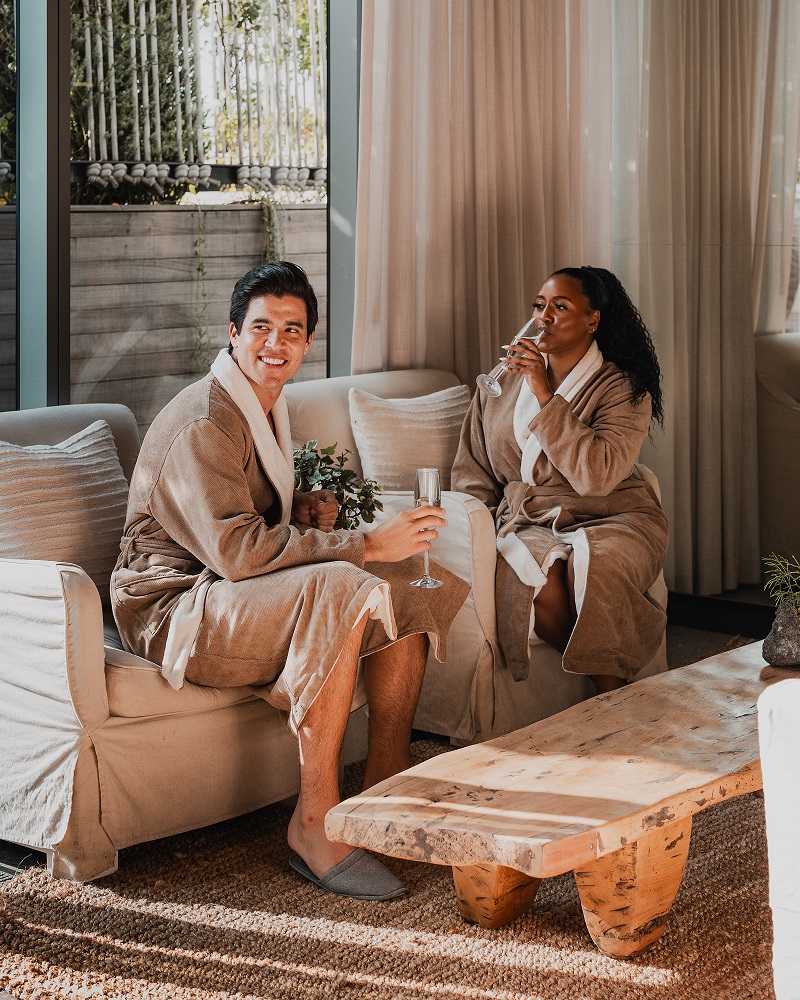The wellness industry has undergone a remarkable transformation over the past decade, becoming a cornerstone of the hospitality landscape. According to Polaris Market Research, the spa industry is the fastest-growing segment within the hospitality and leisure sector, causing spas to evolve from mere amenities to transformative guest experiences that help businesses stay competitive. With 21,840 spa locations in operation and 182 million visits to spa establishments in the United States in 2023, as reported by the ISPA Foundation’s 2024 U.S. Spa Industry Study, creating unique experiences that not only attract guests but also encourage repeat visits is crucial for any spa’s success, be it day spas, hotel and resort spas, destination spas, or another type of facility.
Innovative spa design has become essential for attracting and retaining clientele. As guests increasingly seek personalized and immersive experiences, spa facilities must adapt their designs to meet these evolving expectations. If your spa isn’t leveraging innovative design, exploring current trends, addressing the impact of personalization, and tackling common operational challenges, you risk falling behind competitors, losing valuable clientele, and allowing significant revenue opportunities to slip away.
More Than Aesthetics: Designing Spas for Impactful Experiences
Spa design extends far beyond visual appeal; it plays a pivotal role in shaping the overall guest experience. Thoughtful design can significantly drive guest loyalty and satisfaction, establishing a strong brand identity within the wellness industry. A thoughtful design can reinforce your brand’s commitment to wellness, creating a memorable journey that aligns with the values and expectations of the modern spa-goer. Elements such as lighting, layout, and sensory experiences can influence how guests perceive their time spent in a spa, making them more likely to return. A well-designed spa creates an environment that resonates with guests well beyond their time spent in your location. Ultimately, spas that prioritize innovative and intentional design not only enhance their guests’ experiences but also set themselves apart in a competitive market.
The Impact of Spa Design on Guest Loyalty
When a spa is designed with the guest experience in mind, it increases the likelihood of repeat clientele by creating an inviting atmosphere that encourages satisfaction and relaxation. Beyond creating a calming environment, you want to ensure your spa is designed for a pleasant and memorable customer experience. For example, providing on-site parking or reimbursing guests for local parking fees can ease arrival stress. Clear interior and exterior signage helps guests navigate effortlessly to and through the facility. Having designated areas for checking in and out that are separate from waiting areas minimizes congestion. Sound-proofing treatment rooms and positioning them away from busy areas ensures a serene experience, allowing clients to fully unwind. If your spa overlooks the importance of strategic design to enhance the guest experience, you may lose clients to competitors that prioritize ease and enjoyment in their offerings.
The Importance of Personalization in Spa Design
Olinger Group’s 2024 Spa Insights Report found that consumers value personalized services, with 83 percent of respondents indicating that customization is crucial to their spa experience and 86 percent stating they prefer spas that specialize in the services they seek. Beyond personalized service offerings, personalization in design options can enhance the guest experience by allowing them to customize their environment, preferences, and experiences to align with their own needs. For instance, incorporating temperature controls in treatment rooms or on treatment tables enables guests to adjust the climate to their liking. Adjustable treatment tables that can widen or lower for greater comfort, mirrors that feature adjustable lighting for various skin tones, even something as simple as making sure there is accessible seating in every room or hallway further demonstrates a commitment to personalized care. These thoughtful design elements can significantly elevate a guest’s overall experience, making them feel valued and catered to.
To better understand your ideal clientele and their needs and desires, Arch Amenities Group’s Local Spa Market Report uses proprietary data and criteria to pinpoint your local audience, identify prospective target clients with a propensity for spa services, and understand what makes them tick like behaviors, interests, and demographics.
Spa Design Trends Shaping the Wellness Industry
As the wellness landscape shifts, spa design trends are keeping pace to create environments where guests want to be. Having transformed hundreds of spas through design consulting, development, and managerial operations, the expert teams at Arch Amenities Group and Hutchinson Consulting have their fingers on the pulse of the wellness industry and stay ahead of emerging trends that both elevate guest experiences and optimize operational efficiency. These emerging trends highlight the industry’s dedication to crafting exceptional guest experiences through innovative spa design and beyond.
Sustainability in Spa Design
There is a growing emphasis on sustainability in spa design, with many facilities opting for eco-friendly materials such as reclaimed wood, bamboo, and low-VOC paints. These choices not only reduce environmental impact but also create a warm, inviting atmosphere that resonates with health-conscious guests.
Biophilic Design at Spas
Integrating nature into spa environments through biophilic design choices is becoming increasingly popular. Biophilic design principles focus on creating spaces that connect guests with the natural world, utilizing elements like indoor gardens, water features, and ample natural light. This approach enhances relaxation and well-being by providing a soothing backdrop that reduces stress.
Multi-Sensory Spa Environments
Modern spas focus on engaging all five senses to create a holistic experience. This includes incorporating soundscapes, aromatherapy, and tactile elements in treatment rooms and relaxation areas. These design choices aim to immerse guests in a calming atmosphere that promotes mindfulness and relaxation.
Technology Integration at Spas
Advanced technology is transforming the spa experience. From technology-supported services and offerings to tools that streamline management and operations, designing your spa with technology as a guiding principle enhances personalization, improves efficiency, and elevates overall guest satisfaction. From unique touches like heated flooring to simple elements like ensuring there are enough available outlets, technology integration is a crucial part of innovative spa design.
Flexible Spaces in Spas
Today’s spas are increasingly designed with versatility in mind. Multi-purpose areas can accommodate various treatments and services, allowing spas to adapt to changing guest needs and preferences. With the rising trend of spas being utilized for social gatherings, flexible spaces enable groups to enjoy wellness experiences together, fostering a sense of community. By creating environments that support a variety of offerings, spas not only enhance guest satisfaction but also tap into new revenue streams.
Shaping the Future of Wellness: Innovative Concepts in Spa Design
Thoughtful and innovative spa design is key to shaping memorable guest experiences and building lasting connections. By introducing design elements that go beyond aesthetics, spas can foster deeper relaxation and well-being, while standing out in a competitive market. Each choice, from sustainable materials to personalized spaces, represents a commitment to elevating the experience and driving growth. With a focus on purposeful design, spas can build loyalty, attract a broader clientele, and ensure enduring success in an ever-evolving industry.





